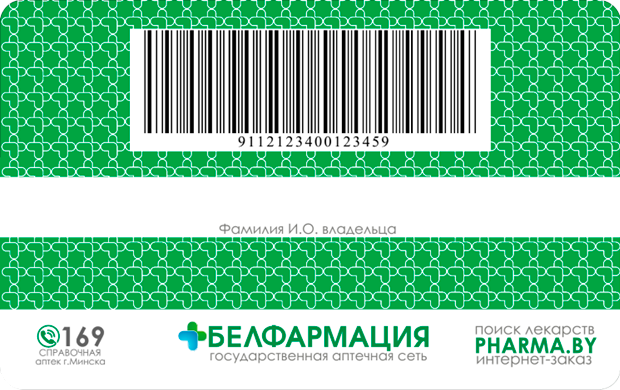Dear patients!
Our clinic has implemented the AIS “ELECTRONIC PRESCRIPTION” system.
To obtain patient identification plastic cards, you can contact office No. 112 or the general medical practice department (according to the work schedule).
You must have your passport with you!
When using patient identification plastic cards, pharmacies provide a discount:
- Domestic drugs – 5%.
- Foreign drugs – 2%.
How does the “Electronic prescription” work?
Modern information technologies are becoming indispensable assistants in the daily work of specialists in various fields of activity, as well as in people’s everyday life.
An electronic prescription is a light green plastic card with a barcode. It contains the patient’s identification data: last name, first name, patronymic and other personal data, as well as information about the prescribed medications.

Questionnaire on the level of satisfaction of citizens
AIS “Electronic prescription”
How does this system work? First things first.
To get a card, you need to go to the reception at your local clinic. You will be directed to a medical registrar who, upon presentation of your passport, will enter your identification number into the electronic database, which will assign a specific card for medical care.
An electronic card can also be issued for a child. In this case, one of the parents provides their passport, as well as the child’s birth certificate. After registering the card, the patient signs an informed consent form for its use for medical care. The process takes only a few minutes and you have the electronic card in your hands, and it is completely free.
You should not worry if the card is suddenly lost: the patient’s data is encrypted and can only be seen by the doctor who is currently conducting the treatment. It is easy to restore the card: upon presentation of your passport, you will be given a new one free of charge.
In practice, the process of issuing an electronic prescription occurs as follows. The patient comes to see the doctor. After examining the patient, studies the results of diagnostic tests, makes a diagnosis, prescribes additional tests and treatment if necessary, and gives recommendations.
All information about the patient’s health is entered into a special program, and the prescribed medications are also recorded there. Then all this appears in the patient’s electronic outpatient card and is automatically duplicated on a plastic card – the electronic prescription is ready.
It should be noted that it is not necessary to bring a plastic card to the doctor’s appointment. It is necessary when a person goes to the pharmacy for medicine.
Soon, all pharmacies, including commercial ones, will connect to the automated “Electronic Prescription” system, and it will also be possible to use the doctor’s electronic signature. Then there will be no need to duplicate the paper form at all. If the patient asks to write him a paper prescription, he will not be refused.
Using a plastic card for medical care allows you to buy domestic medicines with a 5% discount, medical products and imported medicines with a 2% discount.
Buying a medicine with an electronic prescription is quite simple: the barcode of the card is scanned at the pharmacy, after which the pharmacist or chemist sees the entire list of necessary medicines and dosages.
It is worth noting that in an electronic prescription, the doctor prescribes a medicine both by the international non-proprietary name and by the name of the manufacturer, which means that the patient can purchase the medicine that is currently available.
The convenience of using electronic prescriptions will most likely be appreciated by patients with chronic diseases: to extend the validity of the prescription, they do not need to come to the clinic. To do this, just call the doctor and he will automatically duplicate the medicines for a new prescription.
Thanks to the card for medical care, the doctor can monitor the prescribed treatment. At the next appointment, the doctor sees whether the patient has purchased the medicine at the pharmacy, which means it is possible to judge whether the patient is undergoing treatment or ignoring it. Also, the database reflects the entire list of drugs prescribed to the patient by other specialists.
In the future, the plastic medical care card will become a full-fledged replacement for the paper outpatient card. Each patient will have access to their own user account, where information about the person’s physical condition, vaccinations, laboratory diagnostic tests and prescribed drugs is stored.
